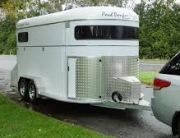The mouth is sensitive hand position is important and varies from rider to rider as we are not all the same shape or length of arm or body.
Contact should feel like gently holding hands with your horse
Top picture: What a pulling hand does to the horse. It locks him up.
Its called Tea Pot Neck and steals the energy from the horses hind legs leaving them trailing out the back. It can affect the horses breathing and is very uncomfortable for him.
Try this exercise
- Stand up, hands on knees. Try to walk with hollow back
- then with your head pulled in like Tea Pot neck
This is the effect of pulling the horses head into position on a hollow backed horse
It hurts and you cannot move easily.
Contact and hand position
Hands should be level. Thumbs on top and Knuckle to Knuckle or you cannot engage your side muscles that keep you upright
Top Tip
Try imagining keeping two $50 Bills behind your armpits to engage your side muscles
To find your own personal hand position – take your elbows back behind you whilst still holding the reins. Stop when it feels really uncomfortable. Now gently ease your elbows forward until the uncomfortable feeling becomes a really comfortable feeling. Your elbows should be around about perpendicular to your body line. That is your own personal workspace. Imagine that between your body and your hands there is something solid like a concrete block, so that you are unable to pull back from this workspace into your tummy.
Imagine that your hands are in an ice-cream container and that they can move around within that space (your workplace) but they cannot pull back beyond the confines of your ice-cream container.
Hands have different jobs. It’s a bit like rubbing your tummy and patting your head at the same time. They work together at different jobs.
The outside hand
- turns the horse
- Half halts
- Asks for reach to the bit
The inside hand
- Supports the outside hand so the bit is not pulled across the horses mouth
- Positions the horses head on your line
- Keeps the inside mouth moist and soft
Top Tips
- A horse will tend to go on his forehand when the rider brings the elbow in front of the perpendicular body line.
- The weight of the riders shoulder and arm should be absorbed in the hip area. Rather like resting your elbows on a table.
- The upper arm should be relaxed enough to hang naturally but sufficiently supported enough to carry the forearm lightly.
How not to pull
Lets start by engaging your core
- The opposite of Core engagement Is often called motorboat / Water ski
Exercise 1
How to engage core
This is best done standing up
- Bend over laterally to the left side.
- Bend over laterally over to the other side.
- Now try and do both at the same time.
You’ll look like you’re just standing straight, but everything will be completely engaged and totally braced.
Exercise 2
In a riding position knees bent hands out in front Try pushing the person next door to you out of your space
Engaging your core will help you to have independent arms from your body rather like a conductor
An engaged core will help to prevent you from pulling
No core + A pulling hand














Follow Us!